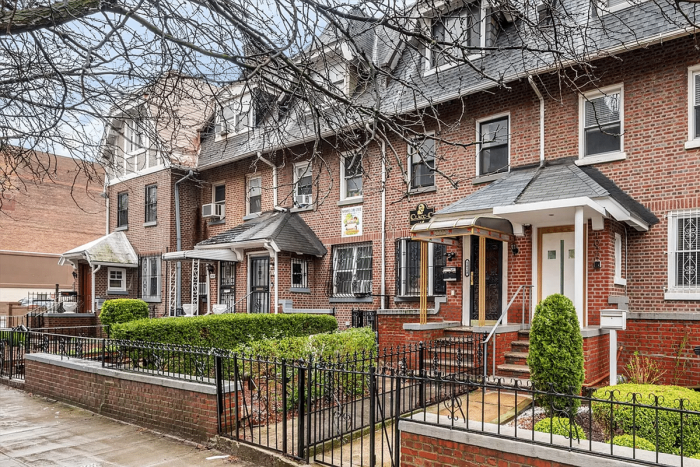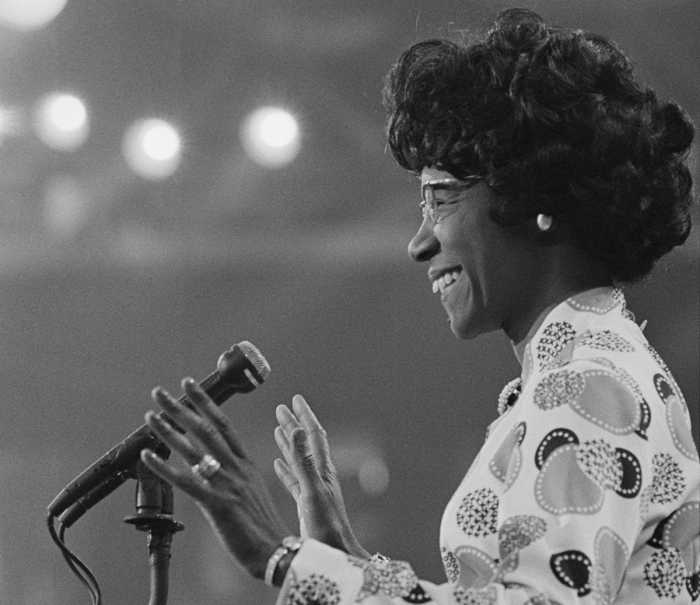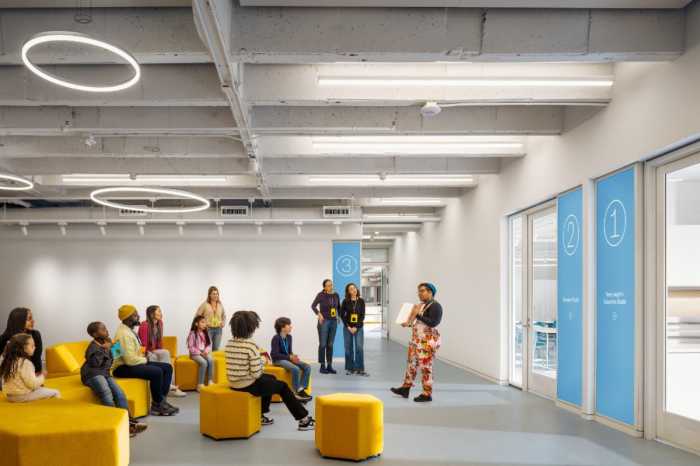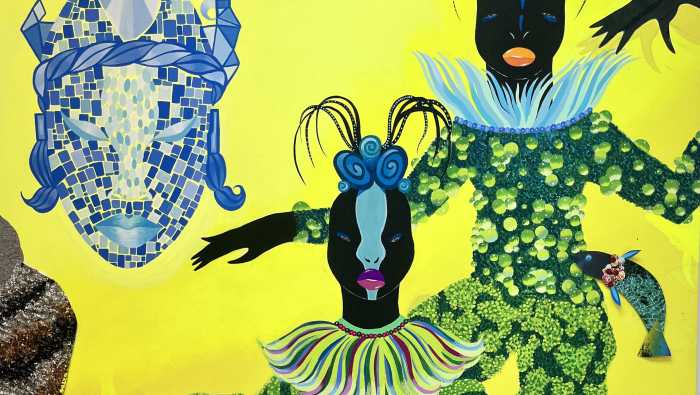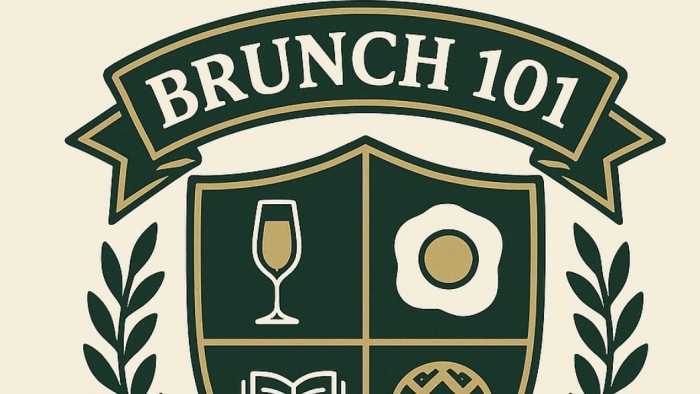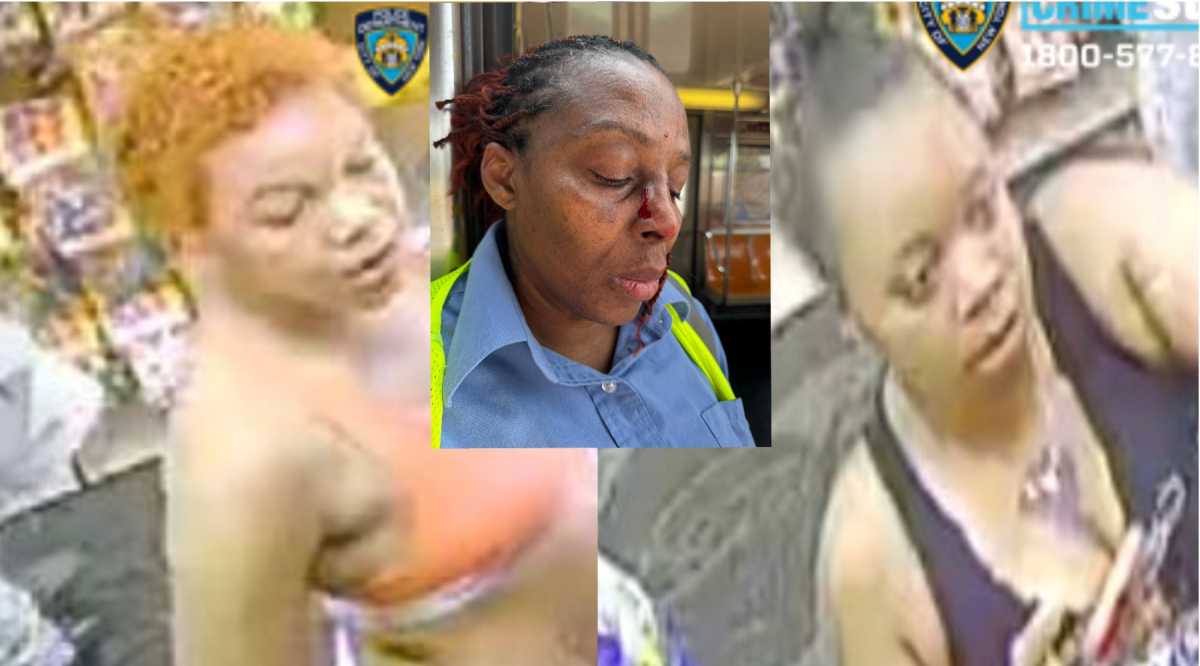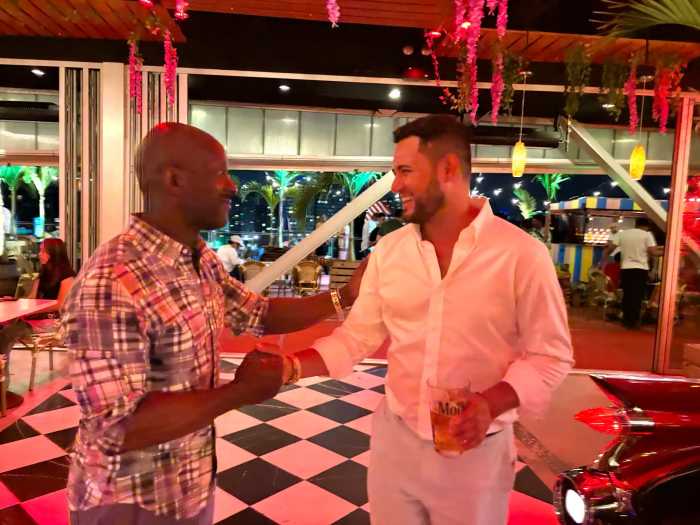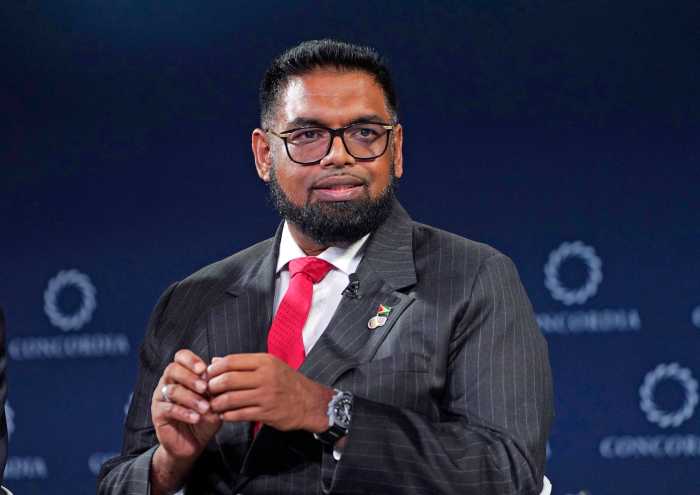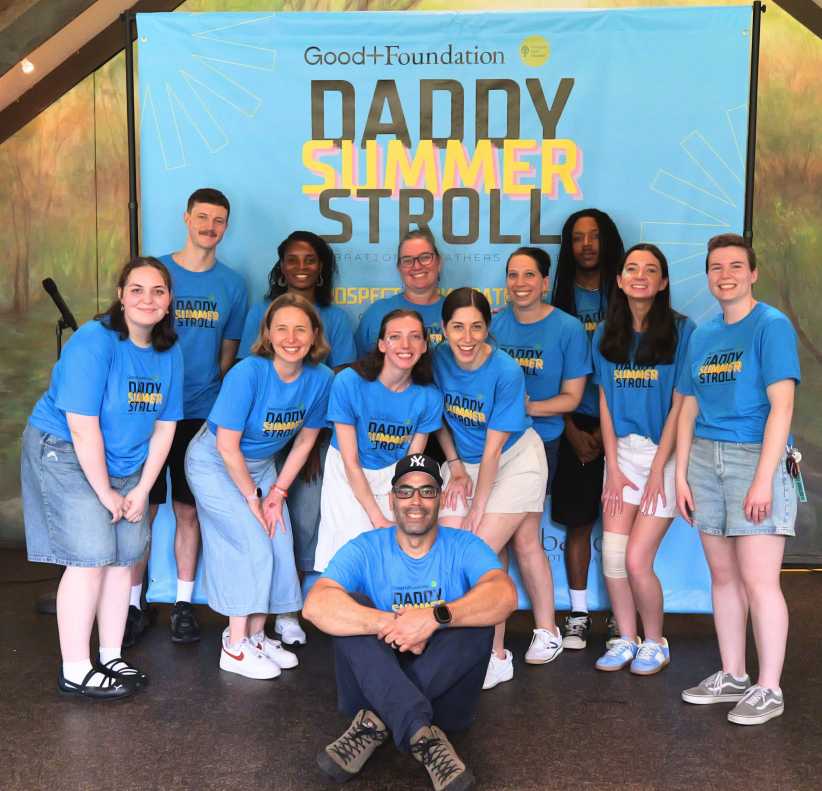The Brooklyn Museum is celebrating its 200th birthday by turning some traditions upside-down.
What is now one of Brooklyn’s cultural cornerstones started out in 1823 as the Brooklyn Apprentices’ Library — one of the first public circulating libraries in New York City. In 1843, the library merged with the Brooklyn Institute of Arts and Sciences to become what would eventually be known as the Brooklyn Museum.
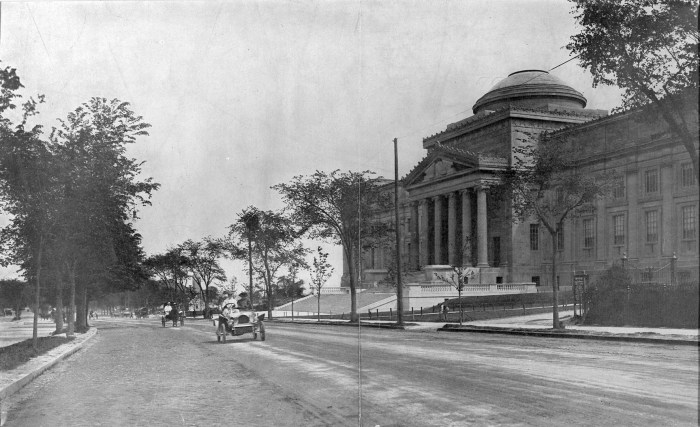
“Our founders envisioned an institution that brought world culture and history to a diverse population of immigrants with the hope of creating more understanding, better neighbors, a better city, and a better country,” said museum director Anne Pasternak on Oct. 2. “It was part of the early ideals of the American project.”
Since then, Pasternak said, the museum has become known as a “trailblazer” in the museum world, and one with a deep commitment to Brooklynites.
On Oct. 4, the museum will kick off its bicentennial celebration with two new exhibitions: “Toward Joy: New Frameworks for American Art” and “The Brooklyn Artists Exhibition.”
Reexamining traditions in the American Art collection
“Toward Joy” is both old and new. Housed on the museum’s fifth floor, the exhibit is made up largely of the museum’s existing collection of American art, reorganized and recontextualized in answer to the question “how might American art be experienced in this moment?”
The exhibit centers on the communities historically most impacted by colonialism and violence in America and how they experience joy amid trauma — rather than on the perpetrators of that violence and the suffering it caused.

Where the gallery used to be hung on white walls in mostly chronological order, according to Curator of American Art Stephanie Sparling Williams, each room in “Toward Joy” has been painted and re-hung based on eight different “frameworks,” each representing a different question or ideal.
“We’re using the word frameworks quite deliberately because they really represent a set of ideals and also action — curatorial action,” Sparling Williams said. “For me, I wanted them to emerge out of the experiences, world views, or perspectives of strategically marginalized communities from within the museum.”
Since the galleries are organized by framework — not time, place or origin — works that might usually end up on opposite sides of the exhibit are now side-by-side, providing context and contrast.
On one wall, Albert Bierstadt’s 1866 painting “A Storm in the Rocky Mountains, Mt. Rosalie,” a white man’s 19th-century depiction of a real Colorado mountain with significant ties to local Native communities, hangs beside a Haudenosaunee Thanksgiving Address giving thanks to the natural world from plants to fish, birds and the sun.
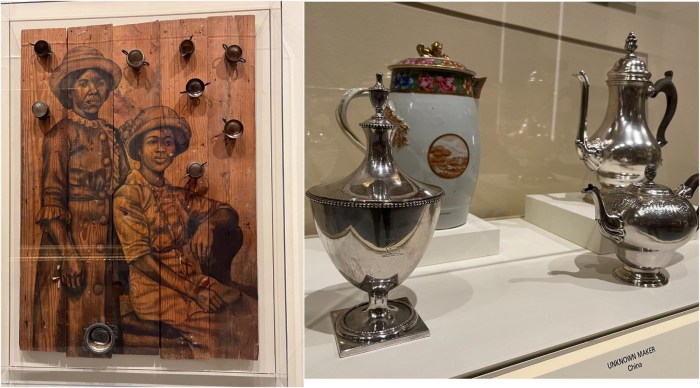
On another, Whitfield Lovell’s “Thursday,” a portrait of two unnamed Black American women portrayed as domestic laborers in a white home, is displayed next to a case full of fine silver sugar bowls — themselves symbols of forced and hidden Black labor in homes and on sugar plantations.
With each piece hung and contextualized in a new way, the team also rewrote the written descriptions hanging beside them, Sparling Williams said.
“While some of the information might be common knowledge to our visitors, a lot of the other information that we’ve decided to include that maybe specifically relates to the framework or helps connect the work to the works around it is entirely new,” she said. “Everything was revised, refreshed, or rewritten on the occasion of the installation.”
Throughout the exhibit there are bits of Brooklyn — a vintage Brooklyn Dodgers pennant, a quilted portrait of Shirley Chisholm, a painting by Ad Reinhart created while the artist was teaching at Brooklyn College.
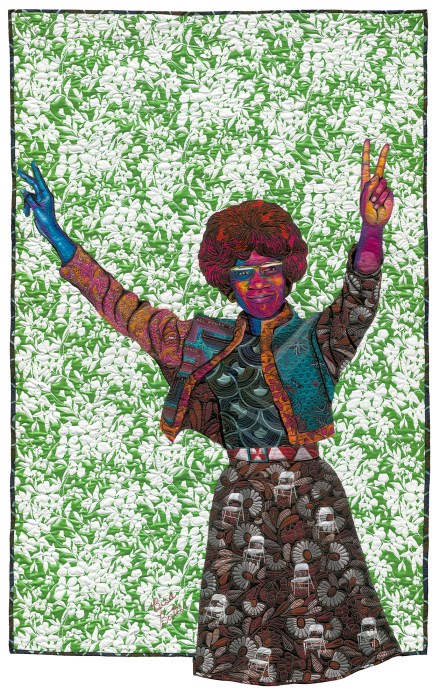
Bringing local artists to The Brooklyn Museum
In “The Brooklyn Artists Exhibition” on the first floor, it’s all about Brooklyn. The exhibit features more than 200 works by artists who live or work in Brooklyn — the museum’s largest-ever exhibition featuring exclusively Brooklyn-based artists.
The museum has been featuring local artists in various shows since the 1930s, said Sharon Matt Atkins, deputy director for art, but has never had such a “democratic” open call for submissions before. There was no submission fee, and the only requirement was that the artists had lived or worked in Brooklyn for five years.
More than 4,000 people applied, Matt Atkins said, and the artist committee had to choose just 200 for the show. They include paintings, drawings, photographs, sculptures, and even video and interactive works.
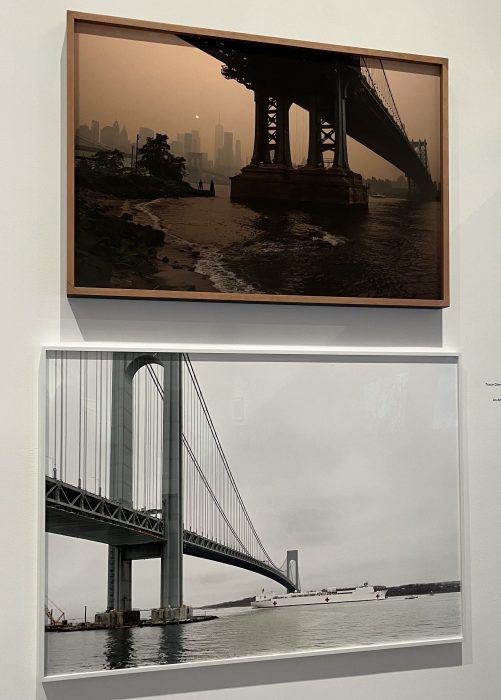
Inside “The Brooklyn Artists Exhibition,” visitors will see familiar sights. Two stacked photographs by Tracie Dawn Williams and An-My Lê capture uncertain moments at the foot of Brooklyn’s bridges. Lê’s image shows the USNS Comfort sailing beneath the Verrazano Bridge as it responded to the COVID crisis in New York City, and Williams’ captures the sun poking through hazy wildfire smoke beside the Manhattan Bridge in June 2023.
Some of the pieces represent more comfortable moments — Melissa Joseph’s wool and felt portrait “Olive’s Hair Salon” shows her niece cutting her brother’s hair in their backyard. Eily Manwaring’s painting “Held at the Station” depicts two women embracing on orange subway seats.
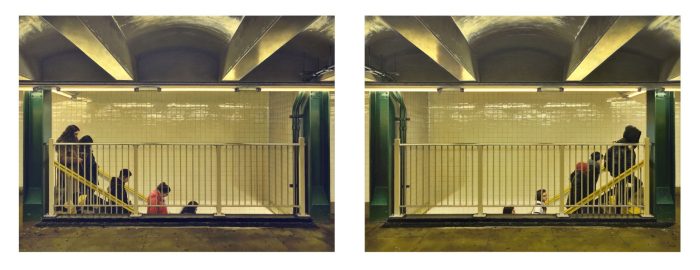
Other pieces rove outside of Brooklyn, into different cities or different worlds. In a glass case is Cate Pasquarelli’s “Small Town,” which shows a home in the fictional town of New Bantam lifted up by helicopter-esque flying machines. Henry Huang Chang’s painting “Island and Its Visitors—Onsen in Mid-Autumn” shows a pair of figures immersed in a part-tropical, part-fantastical world.
As soon as the team started to think about the 200th anniversary, they thought about capturing the creative spirit of Brooklyn, Matt Atkins said, which inspired the open call.
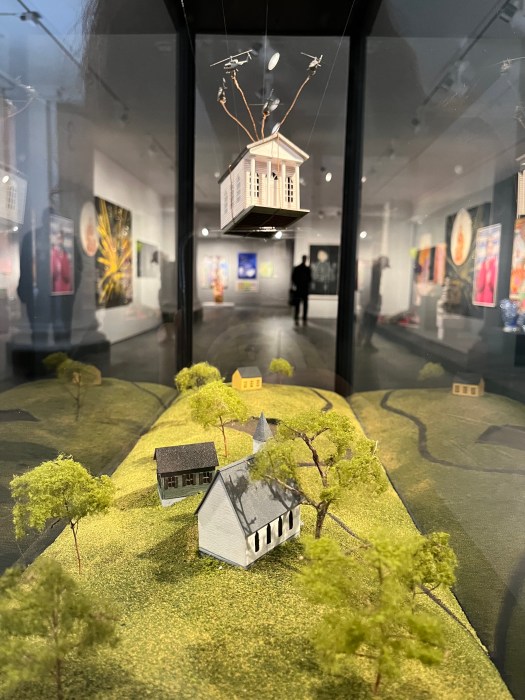
“The 200th anniversary is partly celebrating the community that has made it possible for the museum to exist for 200 years,” said Jennie Teng, special exhibit administrator. “So, what better way than to invite as much of the community as we can fit into this space, into this space.”
The show also inspired other artists to come together in another gallery — the Brooklyn Waterfront Artists Coalition, which last month opened “Salon des Refusés,” featuring artists who were rejected from the Brooklyn Museum call.
Matt-Atkins was “absolutely thrilled” about BWAC’s show, she said. It was challenging to choose just 200 works for the museum show, and she kept pushing for more.
“The fact that there are another 200 on view in another space, I’m thrilled,” she said. “And I can’t wait to see it.”
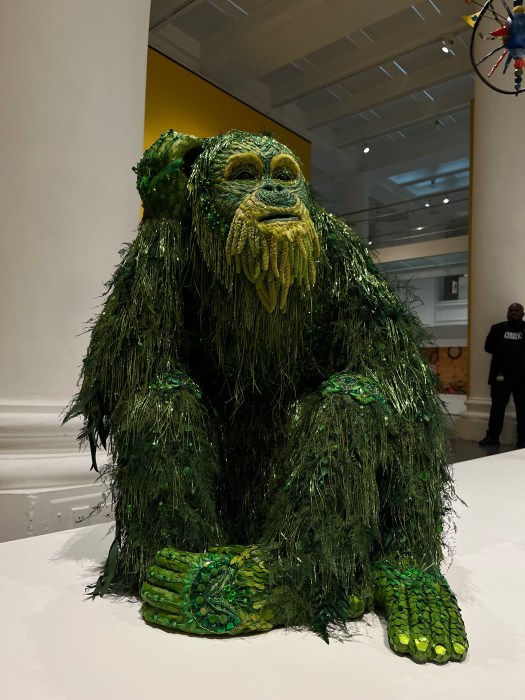
Like in “Toward Joy,” the plaques in “The Brooklyn Artists Exhibition” are different — they’re entirely virtual. The committee didn’t want to take up space on the crowded walls with text. Instead, QR codes lead visitors to a webpage with a picture and a writeup of each piece, organized by gallery number.
“When you scroll down, you’ll see the artist responding to Brooklyn,” Matt Atkins said. “I think there’s just such wonderful little bits and treasures in those statements, and really I think speaks volumes to why exactly this was so important in this moment. Because Brooklyn holds so much meaning for the artists who live here and the connections that they have with one another.”
Celebrating 200 years, for a full year
Both exhibitions open to the public on Oct. 4. On Oct. 5 and 6, the museum will host its big Birthday Bash, with gallery tours, art-making workshops, live music, and a pop-up marketplace — plus a classic Junior’s Cheesecake birthday cake.
The celebrations will continue through 2025. In November, the museum will debut another new exhibit, “Solid Gold,” which explores the “majesty of hold through 6,000 years of artwork, fashion, and design.” Next year, it will launch “Breaking the Mold: Brooklyn Museum at 200,” a three-part show featuring art created in the borough through history, archival materials, and new works donated in honor of the bicentennial. This fall, it will test out the new Museum on Wheels — a mobile museum housed in a colorful Airstream trailer – before offically debuting the program next year, at which point it will bring education and programming all over Brooklyn.
“There’s so much more to our history that speaks to the kind of innovative spirit that is the Brooklyn Museum,” Pasternak said. “And while we look back on the last 200 years with awe and pride, it’s the next 200 years to come I personally am most energized by, as we work really hard to ensure that the Brooklyn Museum will have a future of even greater impact and relevance.”
Correction 10/4/24, 3:01 p.m.: This story previously misspelled Sharon Matt Atkins as Sharon Mott Atkins. We regret the error.



